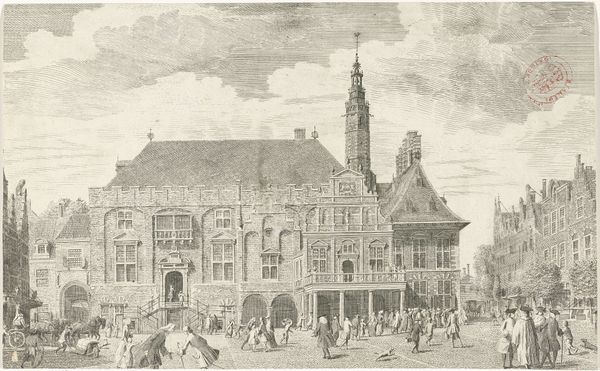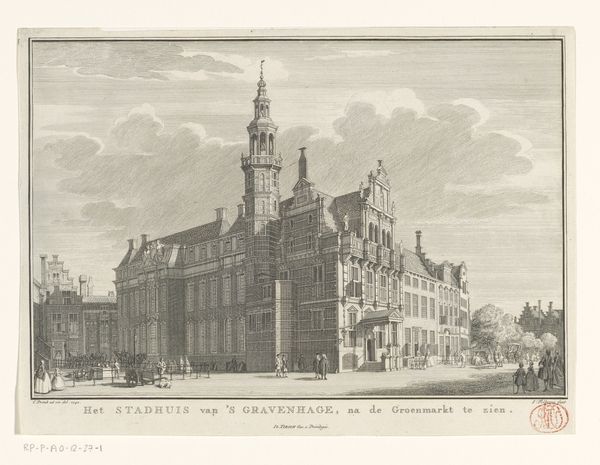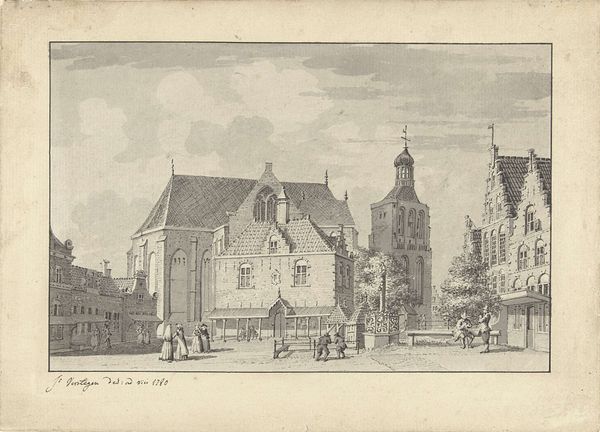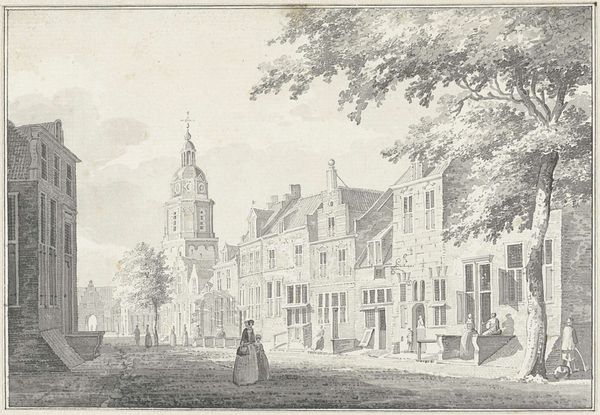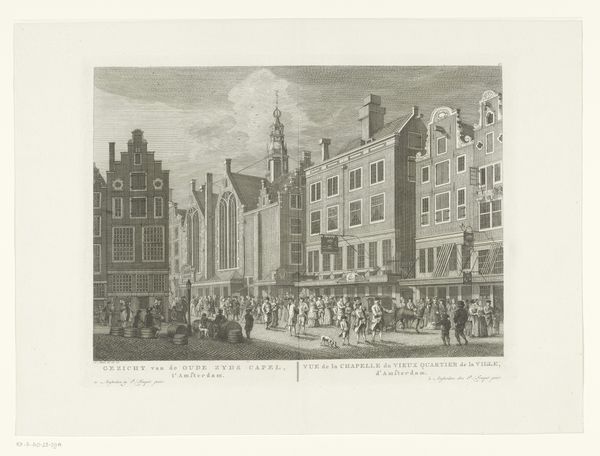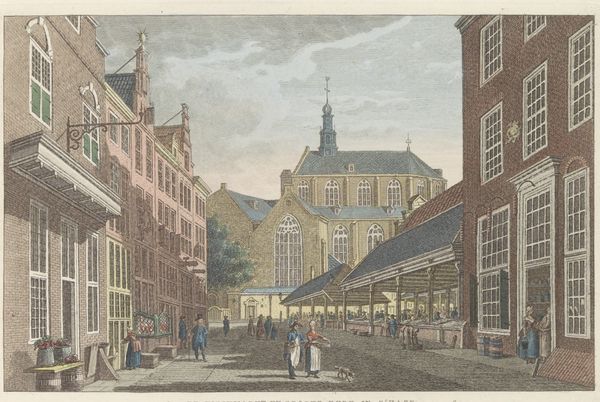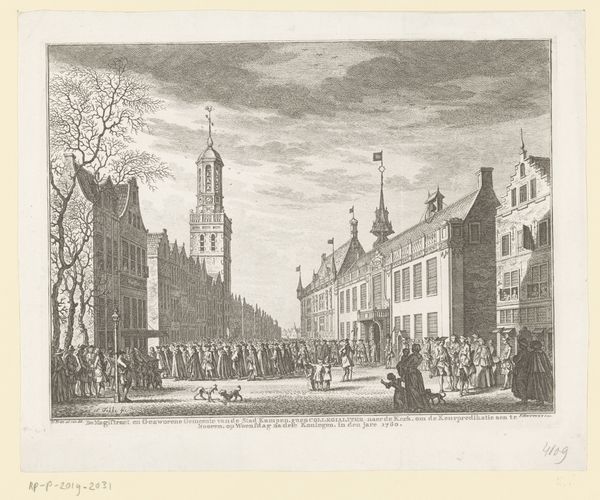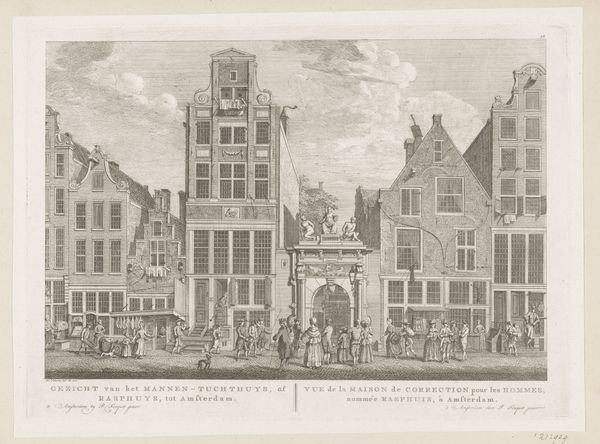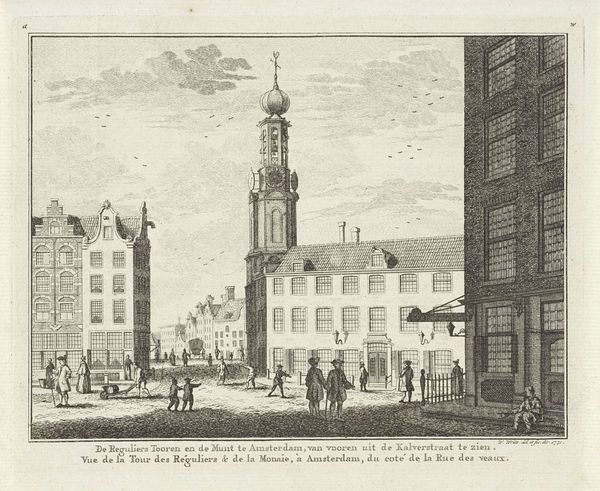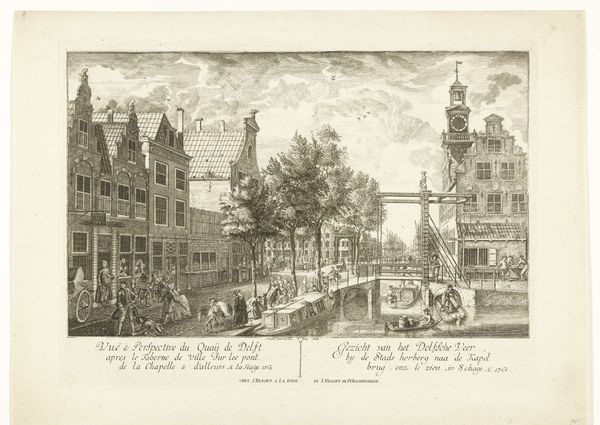
Dimensions: height 281 mm, width 433 mm
Copyright: Rijks Museum: Open Domain
Editor: This print, titled "Stadhuis van Haarlem," by Cornelis van Noorde, captures the city hall in 1764. It is currently held at the Rijksmuseum. My initial reaction is drawn to the architectural geometry and how the space is activated by the figures populating the foreground. Curator: I am fascinated by how Noorde, working within the Baroque style, creates such depth using what must have been painstaking work with engraving tools. Notice the variations in line thickness; it dictates the tonal range from pale sky to shadowed building facade. Editor: Absolutely. But what I see here is more than an exercise in line and tone. I see a very particular socio-economic reality depicted via labor: The artist's labor of creation. The printmaker's labor and that of those figures depicted engaging in commerce and civic life in the square. The engraving itself suggests widespread dissemination of information and perhaps civic pride, but its value would depend on material concerns – the availability of paper, ink, and a printing press. Curator: Certainly, the material conditions shape the art object, however, let us not reduce the image to a mere record of production. The deliberate organization, for instance – consider the rhythmic articulation between light and shadow, is an organizing formal principle, directing the viewer’s eye around the composition! And then the carefully orchestrated groupings of figures - what narratives might be being built up within those clusters of characters? Editor: True, but each decision relies on available materials and existing social infrastructures, doesn't it? For example, what did paper mean as a carrier of civic records at the time? Were prints only made available to certain people within a highly hierarchical social structure? To properly engage with an object we must understand where materials and tools come from, and to what end an artisan puts their labor toward it. Curator: Of course, those are all valuable layers. Still, the way light and shadow delineate space remains, in my view, its most powerful achievement. To transcend the constraints of the materials themselves – that, surely, is part of the wonder of art. Editor: I agree it's an amazing composition, but understanding how prints circulate—what work they do out in the world—enhances the historical dimension, in my opinion. Curator: Fair enough. Each helps unlock this piece's intricate secrets. Editor: Agreed! They each play a crucial part.
Comments
No comments
Be the first to comment and join the conversation on the ultimate creative platform.
